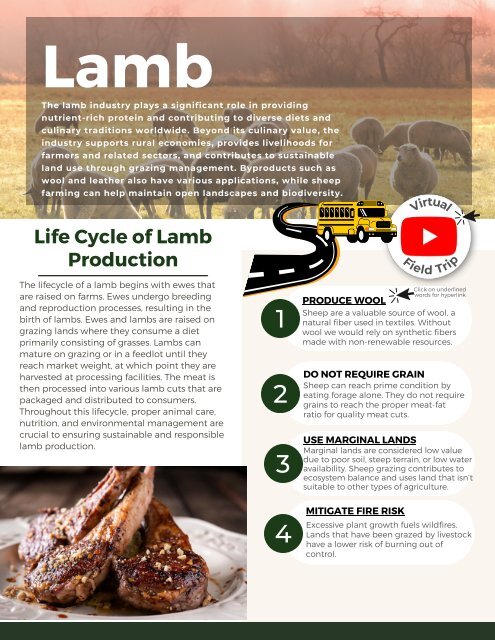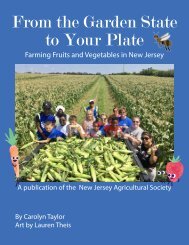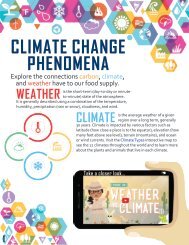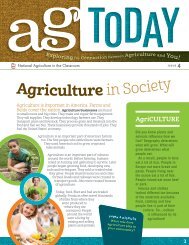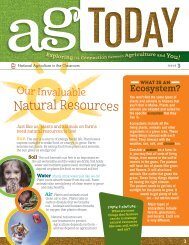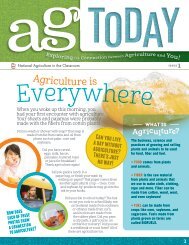Livestock Production
You also want an ePaper? Increase the reach of your titles
YUMPU automatically turns print PDFs into web optimized ePapers that Google loves.
Lamb<br />
The lamb industry plays a significant role in providing<br />
nutrient-rich protein and contributing to diverse diets and<br />
culinary traditions worldwide. Beyond its culinary value, the<br />
industry supports rural economies, provides livelihoods for<br />
farmers and related sectors, and contributes to sustainable<br />
land use through grazing management. Byproducts such as<br />
wool and leather also have various applications, while sheep<br />
farming can help maintain open landscapes and biodiversity.<br />
Virtual<br />
Life Cycle of Lamb<br />
<strong>Production</strong><br />
Field Trip<br />
The lifecycle of a lamb begins with ewes that<br />
are raised on farms. Ewes undergo breeding<br />
and reproduction processes, resulting in the<br />
birth of lambs. Ewes and lambs are raised on<br />
grazing lands where they consume a diet<br />
primarily consisting of grasses. Lambs can<br />
mature on grazing or in a feedlot until they<br />
reach market weight, at which point they are<br />
harvested at processing facilities. The meat is<br />
then processed into various lamb cuts that are<br />
packaged and distributed to consumers.<br />
Throughout this lifecycle, proper animal care,<br />
nutrition, and environmental management are<br />
crucial to ensuring sustainable and responsible<br />
lamb production.<br />
1 1<br />
2<br />
3<br />
PRODUCE WOOL<br />
Click on underlined<br />
words for hyperlink<br />
Sheep are a valuable source of wool, a<br />
natural fiber used in textiles. Without<br />
wool we would rely on synthetic fibers<br />
made with non-renewable resources.<br />
DO NOT REQUIRE GRAIN<br />
Sheep can reach prime condition by<br />
eating forage alone. They do not require<br />
grains to reach the proper meat-fat<br />
ratio for quality meat cuts.<br />
USE MARGINAL LANDS<br />
Marginal lands are considered low value<br />
due to poor soil, steep terrain, or low water<br />
availability. Sheep grazing contributes to<br />
ecosystem balance and uses land that isn’t<br />
suitable to other types of agriculture.<br />
4<br />
MITIGATE FIRE RISK<br />
Excessive plant growth fuels wildfires.<br />
Lands that have been grazed by livestock<br />
have a lower risk of burning out of<br />
control.


